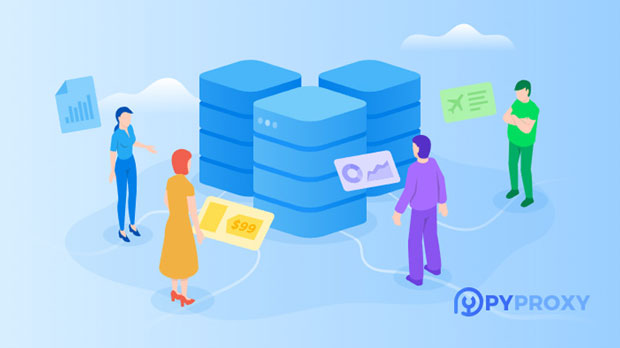How to filter countries and regions for free proxy server IP?
Selecting free proxy server ips based on countries and regions is a critical task for users who want to remain anonymous, bypass geographical restrictions, or access region-specific content. The right choice of country and region can significantly impact the performance, speed, and security of your proxy connection. Many factors influence the effectiveness of proxy servers, including server location, the reliability of the internet infrastructure in the region, and the level of government censorship. In this article, we will explore the key considerations when selecting free proxy server IPs, focusing on country and region-specific elements to guide your decision-making process. Understanding Proxy Servers and Their ImportanceBefore diving into the specifics of selecting free proxy servers based on geographic location, it's essential to understand what proxy servers are and why they matter. A proxy server acts as an intermediary between the user and the internet. It allows users to connect to websites and services via the proxy, which masks the user's real IP address. This provides anonymity, hides the user’s location, and enables access to content that might otherwise be restricted based on geographic location.Factors to Consider When Selecting proxy ips by Country and RegionWhen choosing a free proxy server based on country or region, several factors should guide your decision. These include:1. Geographical Location and Access to Content The primary reason for using proxies is to bypass geographical restrictions or access region-specific content. For example, if you are trying to access content exclusive to the United States, selecting a proxy server located in the U.S. will allow you to mask your real location and simulate being in the U.S. Similarly, if you need access to European content, choose proxies from countries within Europe. 2. Legal and Government Restrictions Some countries have strict government regulations or censorship, which can affect the speed, reliability, or security of free proxy servers. Nations like China or Russia are known for implementing high levels of internet censorship, which can lead to a slower and unreliable proxy experience. Therefore, if privacy and freedom from government monitoring are essential to you, it may be best to avoid using proxies from these regions. 3. Internet Infrastructure and Network Quality The quality of the internet infrastructure in a particular country or region is a crucial factor when selecting proxy servers. Countries with advanced internet networks, like the U.S., Germany, or Japan, tend to have faster, more stable proxy servers. In contrast, less-developed regions with weak internet infrastructure may offer slower proxy servers with frequent disconnections.4. Server Availability and Load Balancing Regions with more free proxy servers typically provide better availability and a higher likelihood of finding a fast and reliable server. However, if the region has too many users sharing the same proxy, the server may become overloaded, leading to slower speeds and instability. Therefore, it is essential to select regions with a balanced number of proxy servers and users to maintain performance.Choosing Specific Countries for Proxy ServersNow that we’ve discussed some of the factors to consider, let’s look at specific countries and regions that offer notable advantages when it comes to selecting free proxy servers.1. United States The United States is one of the most popular regions for proxy servers, offering a wide variety of free proxies. With a robust internet infrastructure and minimal restrictions, the U.S. provides access to high-speed proxies. However, due to its popularity, proxy servers in the U.S. can be overcrowded, leading to potential speed issues.2. Germany Germany is a well-regarded country for its stable internet infrastructure and data privacy laws. Free proxies in Germany are often faster and more reliable than those from other European countries. Additionally, the legal environment in Germany ensures greater privacy for users compared to countries with more restrictive laws.3. United Kingdom The UK offers a high number of free proxy servers with good internet infrastructure. However, users should be cautious about data privacy, as the UK has strict surveillance laws, which may impact the anonymity provided by certain proxies. If privacy is a significant concern, the UK may not always be the ideal choice.4. Canada Canada is another attractive option for selecting free proxy servers. The country has excellent internet connectivity and relatively fewer restrictions on internet access, making it a favorable choice for proxies. Moreover, Canada's legal environment provides a good balance between privacy and regulation.5. France France offers an array of free proxy servers with good internet speeds. Proxies located in France are commonly used for accessing European-specific content. However, like the UK, France has certain privacy regulations that may impact the degree of anonymity when using proxies.Regional Considerations for Proxy Server SelectionWhile individual countries play an important role in proxy selection, certain regions may offer more advantages based on specific needs.1. European Union (EU) The European Union offers a broad range of proxy servers from various member states. The EU is known for its strong data protection laws, particularly the General Data Protection Regulation (GDPR), which enhances privacy and security for proxy users. Choosing proxies from the EU may be ideal for users concerned about data protection and privacy.2. Asia-Pacific Region The Asia-Pacific region, particularly countries like Japan, South Korea, and Singapore, boasts excellent internet speeds and high-quality infrastructure. These regions are excellent for users seeking fast, stable proxies, especially when accessing websites based in or around Asia. However, countries like China are known for heavy censorship, which could impact proxy performance.3. South America The South American region offers fewer proxy options compared to North America and Europe, but it can still provide reliable servers in countries like Brazil and Argentina. The internet infrastructure may not be as advanced as in other regions, but it's still a viable choice for users looking to access content from South America.Risks and Challenges of Using Free Proxy ServersWhile free proxy servers are attractive due to their cost-free nature, they come with several risks and limitations:1. Security and Privacy Risks Free proxies may not encrypt your data, which exposes you to potential security threats such as hacking and data breaches. It's essential to evaluate the security features of the proxy server before use to minimize risks. Countries with weak data protection laws might pose additional concerns regarding the misuse of user data.2. Speed and Performance Issues Free proxies, particularly those located in highly saturated regions like the U.S., may suffer from slow speeds or frequent downtimes due to server overload. Additionally, free proxies are more likely to have lower bandwidth than paid alternatives.3. Limited Availability Many free proxy servers experience high demand, meaning they may become temporarily unavailable or blocked. It is common for users to face difficulties in accessing free proxy servers, particularly in popular regions.Conclusion: Finding the Best Free Proxy Servers Based on Country and RegionSelecting the best free proxy server based on country and region is a process that requires a clear understanding of your specific needs. Key factors to consider include geographical location, legal regulations, internet infrastructure quality, server availability, and privacy concerns. By carefully selecting regions with reliable internet infrastructure and suitable legal environments, users can optimize their proxy server experience and ensure smoother, faster, and more secure internet browsing. While free proxies offer several advantages, they also come with risks, so always remain cautious when using them for sensitive activities.
2025-01-24
























































